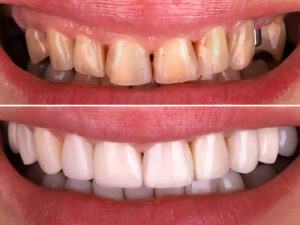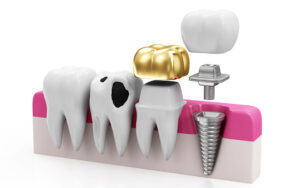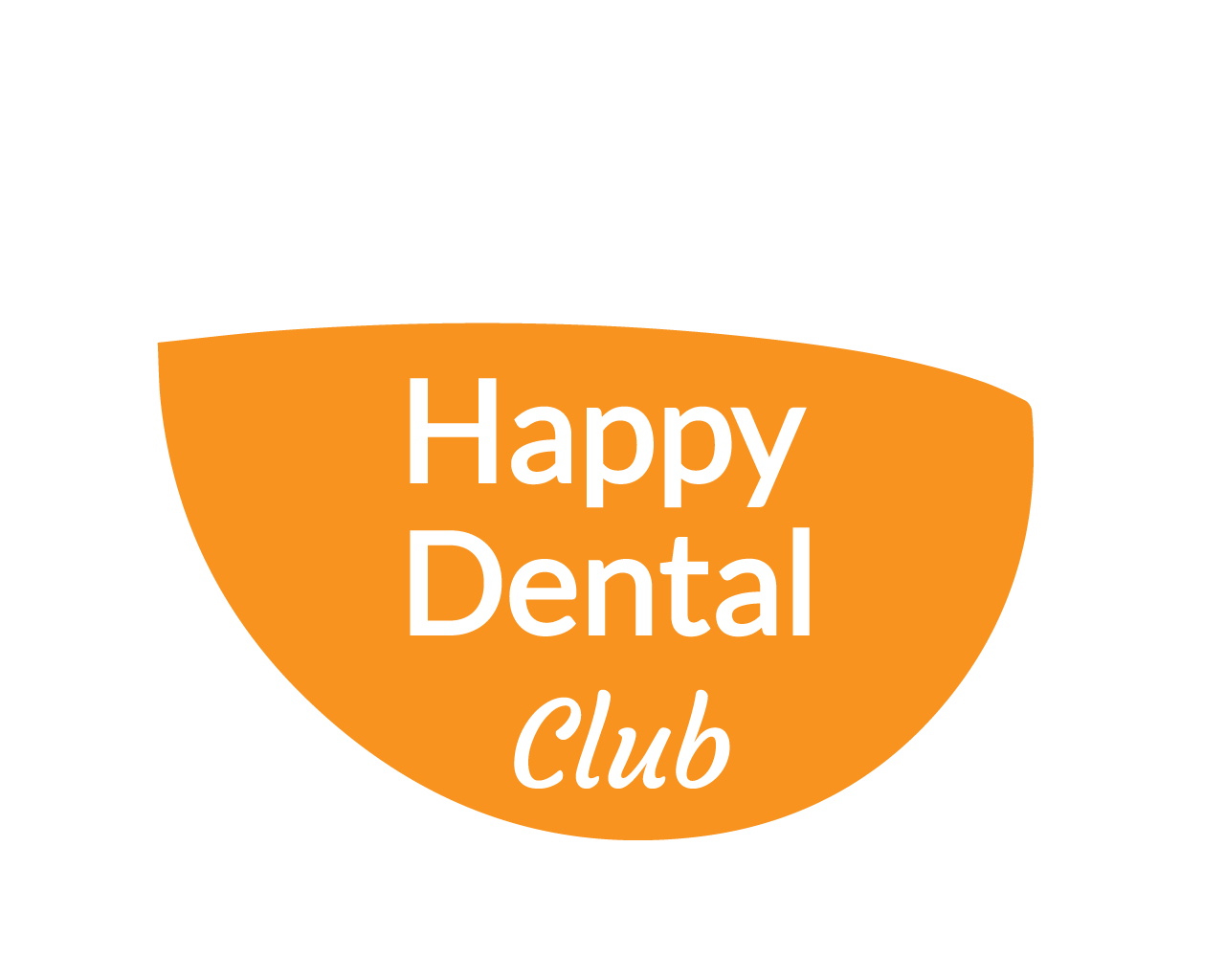Restorative Dentistry: Techniques and Treatments to Restore Damaged Teeth
Introduction Restorative dentistry refers to the branch of dentistry that focuses on restoring damaged or missing teeth. This type of dentistry aims to enhance both the function and appearance of teeth. Restorative dental treatments can include fillings, crowns, bridges, implants, root canals, dentures, inlays, onlays, bonding, and contouring.

Importance of Restorative Dentistry The primary goal of restorative dentistry is to preserve natural teeth as much as possible. When tooth decay, trauma, or other damage occurs, restorative treatments can repair or replace the damaged tooth structure. This helps prevent further damage and maintains the health and function of the surrounding teeth.
Overview of Different Restorative Dental Treatments The following sections describe the most common types of restorative dental treatments used to restore damaged or missing teeth.

Fillings: Types and Procedures
When a tooth is damaged due to tooth decay, fillings are one of the most common restorative dental treatments used to repair the damage. There are several types of fillings available, each with its own pros and cons, and the procedure for getting a filling is relatively straightforward.
- Types of fillings include amalgam, composite resin, glass ionomer, gold, porcelain, temporary, and white fillings
- Needed when there is tooth decay or damage in a small area of the tooth
- Pros include a relatively simple procedure, durable and long-lasting results, and restoration of the tooth’s function
- Cons can include sensitivity, possible need for replacement over time, and potential for visible silver color with amalgam fillings
Fillings are used to repair small cavities caused by tooth decay. There are several types of fillings available, including:
Amalgam Filling:
A mixture of silver, tin, copper, and mercury. These fillings are durable and long-lasting but can be visible due to their silver color.
Composite Resin Filling:
A tooth-colored filling made of a resin material. They blend in with the natural tooth color but may not last as long as amalgam fillings.
Glass Ionomer Filling:
A mixture of acrylic and glass powder. These fillings are often used for baby teeth or small fillings in hard-to-reach areas.
Gold Filling:
A mixture of gold, copper, and other metals. These fillings are durable and long-lasting but can be expensive.
Porcelain Filling:
A custom-made filling that matches the color and shape of the surrounding teeth. They are durable and long-lasting but can be expensive.
Temporary Filling:
A filling that is placed in a damaged tooth until a permanent filling can be made.
White Filling:
A composite resin filling that matches the natural color of the teeth. These fillings can be used on both front and back teeth but may not last as long as other types of fillings.
Dental Crowns: Different Types and When They Are Needed
Dental crowns are used when a tooth is severely damaged, weakened, or has undergone root canal therapy. They can be made of different materials, such as porcelain, gold, and resin, and each type has its own advantages and disadvantages. Dental crowns can help restore the function and appearance of the damaged tooth.
- Types of dental crowns include gold, porcelain, PFM (porcelain fused to metal), resin, stainless steel, temporary, and zirconia crowns
- Needed when a tooth is severely damaged or weakened or has undergone root canal therapy
- Pros include restoration of the tooth’s function and appearance, long-lasting results, and protection of the remaining tooth structure
- Cons can include a more complex procedure, possibility of needing a root canal before crown placement, and higher cost compared to other treatments
Dental crowns are used to restore damaged or weakened teeth that cannot be repaired with a filling. There are several types of dental crowns available, including:
Gold Crown:
A custom-made crown made of gold or a gold alloy. These crowns are durable and long-lasting but can be visible due to their color.
Porcelain Crown:
A custom-made crown made of porcelain. These crowns look like natural teeth and are often used for front teeth.
PFM Crown (Porcelain Fused to Metal):
A custom-made crown made of a combination of porcelain and metal. These crowns are durable and long-lasting but can sometimes show the metal underneath.
Resin Crown:
A custom-made crown made of a resin material. These crowns are less expensive than other types of crowns but may not be as durable.
Stainless Steel Crown:
A pre-made crown made of stainless steel. These crowns are often used for temporary restorations or for children’s teeth.
Temporary Crown:
A temporary crown that is placed on a tooth until the permanent crown can be made.
Zirconia Crown:
A custom-made crown made of zirconia, a strong ceramic material. These crowns are durable and long-lasting and are often used for back teeth.
Dental Bridges: Types, Procedure, and Benefits
Dental bridges are used to replace one or more missing teeth by anchoring an artificial tooth between two existing teeth. There are several types of dental bridges available, including traditional bridges, Maryland bridges, and implant-supported bridges. The procedure for getting a dental bridge is straightforward, and it can provide many benefits for patients with missing teeth.
- Types of dental bridges include traditional, Maryland, implant-supported, PFM (porcelain fused to metal), porcelain, and temporary bridges
- Needed when one or more teeth are missing
- Pros include restoration of the tooth’s function and appearance, prevention of further damage to the surrounding teeth, and long-lasting results
- Cons can include a more complex procedure, possibility of needing additional dental work, and higher cost compared to some other treatments
Dental bridges are used to replace missing teeth by anchoring an artificial tooth between two existing teeth. There are several types of dental bridges available, including:
3-Unit Bridge:
A bridge that replaces one missing tooth with an artificial tooth attached to two crowns that are placed over the adjacent teeth.
Implant Bridge:
A bridge that uses dental implants to anchor the artificial tooth in place.
Maryland Bridge:
A bridge that attaches an artificial tooth to the back of adjacent teeth using metal or porcelain wings.
Permanent Bridge:
A bridge that is permanently cemented in place and cannot be removed.
PFM Bridge (Porcelain Fused to Metal):
A bridge that uses a combination of porcelain and metal for durability and aesthetics.
Porcelain Bridge:
A bridge made entirely of porcelain for a natural-looking result.
Temporary Bridge:
A temporary bridge that is placed until the permanent bridge can be made.
Dental Implants: Types, Procedure, and Pros and Cons
Dental implants are a popular restorative dental treatment used to replace missing teeth. They involve the placement of a titanium post into the jawbone, which acts as an anchor for an artificial tooth. There are several types of dental implants available, each with its own advantages and disadvantages, and the procedure for getting them can take several months.
- Types of dental implants include all-on-4, all-on-6, immediate placement, keyhole, metal-free, mini, restoration of implants, and single implants
- Needed when one or more teeth are missing and the patient has sufficient jawbone density
- Pros include restoration of the tooth’s function and appearance, long-lasting results, and prevention of bone loss in the jaw
- Cons can include a more complex procedure, longer treatment time, and higher cost compared to other treatments
Dental implants are used to replace missing teeth by inserting a titanium post into the jawbone and attaching an artificial tooth to the post. There are several types of dental implants available, including:
All-on-4 Dental Implants:
A technique that uses four dental implants to support a full arch of replacement teeth.
All-on-6 Dental Implants:
A technique that uses six dental implants to support a full arch of replacement teeth.
Immediate Implant Placement:
A technique that places the implant immediately after a tooth extraction.
Keyhole Dental Implants:
A minimally invasive technique that uses a small incision to insert the implant.
Metal-Free Implants:
Implants made of materials other than titanium, such as zirconia.
Mini Implants:
Smaller implants used for patients with less bone density or for anchoring dentures.
Restoration of Implants:
Placing a crown or bridge on an existing dental implant.
Single Implant:
An implant used to replace a single missing tooth.
Root Canals: Types, Procedure, and Who Needs Them
Root canals are necessary when the pulp inside a tooth becomes infected or damaged. This can cause severe pain and discomfort and can lead to further damage if left untreated. There are several types of root canals available, ranging from simple to complex, and the procedure generally involves removing the damaged pulp and filling the tooth with a material that prevents further infection.
- Types of root canals include complex, incisor, molar, premolar, root end surgery, single visit, and retreatment
- Needed when the pulp inside a tooth becomes infected or damaged
- Pros include relief from pain and discomfort, preservation of the remaining tooth structure, and prevention of further damage or infection
- Cons can include a more complex procedure, possible need for additional dental work, and potential for sensitivity or discomfort after the procedure
A root canal is a procedure used to repair a damaged or infected tooth by removing the pulp and nerve inside the tooth. There are several types of root canals available, including:
Complex Root Canal:
A root canal that involves multiple canals or twists in the tooth roots.
Incisor Root Canal:
A root canal performed on one of the front teeth (incisors).
Molar Root Canal:
A root canal performed on one of the large back teeth (molars).
Premolar Root Canal:
A root canal performed on one of the smaller back teeth (premolars).
Root End Surgery:
A surgical procedure used to remove the infected tip of the tooth root.
Single Visit Root Canal:
A root canal that can be completed in one visit to the dentist.
Dentures: Types, Procedure, and Benefits
Dentures are a removable dental appliance used to replace missing teeth. There are several types of dentures available, including complete dentures, partial dentures, and implant-supported dentures. The procedure for getting dentures involves several steps, but they can provide many benefits for patients with missing teeth.
- Types of dentures include complete, immediate, overdentures, partial, removable, and implant-supported dentures
- Needed when one or more teeth are missing
- Pros include restoration of the tooth’s function and appearance, improved speech and chewing ability, and prevention of further damage to the surrounding teeth
- Cons can include a more complex procedure, possible need for adjustments or replacements over time, and potential for discomfort or soreness during the initial adjustment period
Dentures are removable appliances used to replace missing teeth. There are several types of dentures available, including:
Complete Dentures:
A full set of removable dentures used to replace all the teeth in the upper or lower jaw.
Immediate Dentures:
Dentures placed immediately after tooth extraction to allow for immediate tooth replacement.
Overdentures:
Dentures that fit over implants or remaining natural teeth for added stability.
Partial Dentures:
Removable dentures used to replace one or more missing teeth.
Removable Dentures:
Dentures that can be removed for cleaning and maintenance.
Inlays and Onlays: Types and Procedures
Inlays and onlays are custom-made restorations used to repair damaged or decayed teeth. They are typically made of materials such as porcelain or composite resin and are designed to fit into the grooves of the tooth. The procedure for getting inlays and onlays is relatively straightforward, and they can provide many benefits for patients with damaged or decayed teeth.
- Types of inlays and onlays include composite resin, gold, and porcelain restorations
- Needed to repair damaged or decayed teeth that do not require a full crown
- Pros include restoration of the tooth’s function and appearance, long-lasting results, and preservation of the remaining tooth structure
- Cons can include a more complex procedure compared to fillings, potential for sensitivity or discomfort after the procedure, and higher cost compared to some other treatments
Inlays and onlays are custom-made restorations used to repair damaged or decayed teeth. There are several types of inlays and onlays available, including:
Composite Resin Inlay or Onlay:
A tooth-colored restoration made of a composite resin material.
Gold Inlay or Onlay:
A custom-made restoration made of gold or a gold alloy.
Porcelain Inlay or Onlay:
A custom-made restoration made of porcelain for a natural-looking result.
Dental Bonding: Procedure, Benefits, and Limitations
Dental bonding is a cosmetic dental treatment used to repair chipped, cracked, or discolored teeth. It involves the application of a tooth-colored resin material to the affected area, which is then hardened with a special light. The procedure is relatively quick and painless, but it does have some limitations.
- The procedure involves applying a tooth-colored resin material to the affected area of the tooth and then hardening it with a special light
- Benefits include restoration of the tooth’s appearance, relatively simple procedure, and improved self-confidence
- Limitations can include less durable results compared to other treatments, potential for staining or discoloration over time, and limited use for more extensive damage or decay
Dental bonding is a cosmetic procedure used to repair chips, cracks, gaps, or discoloration in the teeth using a resin material. The procedure is relatively quick and painless and can be completed in one visit to the dentist.
Teeth Contouring and Reshaping: Procedure and Benefits
Teeth contouring and reshaping is a cosmetic dental procedure used to improve the appearance of teeth by removing small amounts of tooth structure. This can help correct uneven tooth lengths, smooth rough edges, and improve the overall shape of the teeth. The procedure is generally quick and painless and can provide many benefits for patients looking to improve their smile.
- The procedure involves removing small amounts of tooth structure to improve the appearance of the teeth
- Benefits include improved symmetry and aesthetics of the teeth, relatively simple procedure, and improved self-confidence
- Limitations can include limited use for more extensive damage or decay, potential for sensitivity or discomfort after the procedure, and limited ability to correct major structural issues with the teeth.
Teeth contouring and reshaping is a procedure used to improve the appearance of the teeth by removing or reshaping small amounts of tooth structure. This can be done to correct uneven tooth lengths, smooth rough edges, or improve the overall shape of the teeth.
Frequently Asked Questions:
Restorative dentistry plays an important role in maintaining good oral health by repairing and replacing damaged or missing teeth. With so many different options available, it’s important to work with your dentist to choose the right treatment for your specific needs. By seeking professional restorative dental care, you can enhance both the function and appearance of your teeth and maintain a healthy smile for years to come.
What is restorative dentistry?
Restorative dentistry refers to the diagnosis, prevention, and treatment of oral health issues that require restoration or replacement of damaged or missing teeth.
What are some common restorative dental procedures?
Some common restorative dental procedures include fillings, crowns, bridges, dentures, dental implants, and root canal therapy.
What causes tooth decay and damage?
Tooth decay and damage can be caused by poor oral hygiene, a high-sugar diet, genetics, trauma, and other factors.
How can restorative dentistry improve my oral health?
Restorative dentistry can help restore the function and appearance of your teeth, prevent further damage, and improve your overall oral health.
What is the difference between a filling and a crown?
A filling is used to repair a small cavity or minor damage to a tooth, while a crown is used to cover and protect a severely damaged or weakened tooth.
Can dental implants replace missing teeth?
Yes, dental implants can be used to replace one or more missing teeth and provide a natural-looking, long-lasting solution.
How long does a dental implant procedure take?
The duration of a dental implant procedure varies depending on the number of implants needed, the complexity of the case, and other factors, but it typically takes a few months to complete.
Are there any risks or complications associated with restorative dental procedures?
Like any medical procedure, restorative dental procedures carry some risks and potential complications, but these are rare and can often be managed effectively.
How can I maintain my restored teeth and ensure their longevity?
Good oral hygiene practices, such as regular brushing and flossing, routine dental checkups, and a healthy diet, can help maintain your restored teeth and ensure their longevity.
Can restorative dentistry improve my confidence and quality of life?
Yes, restorative dentistry can significantly improve your confidence and quality of life by restoring your ability to eat, speak, and smile with comfort and ease.

